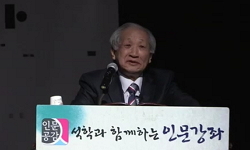일제 강점기의 중·후반(1931~1945년) 시대는 중요한 시기였다. 이 연구는 조선총독부가 총력전 체제의 도래와 함께 무도교육 방침과 무사도 정신과의 연계, 일본적 이데올로기 구축 등을 위한 ...
http://chineseinput.net/에서 pinyin(병음)방식으로 중국어를 변환할 수 있습니다.
변환된 중국어를 복사하여 사용하시면 됩니다.
- 中文 을 입력하시려면 zhongwen을 입력하시고 space를누르시면됩니다.
- 北京 을 입력하시려면 beijing을 입력하시고 space를 누르시면 됩니다.
일제 전시기의 식민권력과 무도교육의 실상(1931~1945)
한글로보기https://www.riss.kr/link?id=G3748568
- 저자
-
발행기관
-
-
발행연도
2016년
-
작성언어
Korean
- 주제어
-
자료형태
한국연구재단(NRF)
-
0
상세조회 -
0
다운로드
부가정보
국문 초록 (Abstract)
일본의 학교교육에서 무도는 1931년 만주침략과 더불어 중학교 및 사범학교 남학생의 필수과정으로 검도와 유도가 채택되면서 시작된다. 일본은 1936년 학교체조교수요목을 개정하고, 검도와 유도를 교수요목으로 새롭게 제정하였다. 조선총독부는 1936년 12월에 이 개정안을 토대로 조선에서 보통교육 중심으로 이루어졌던 방침을 실업교육으로 바꾸고, 지육에 편중된 교육방침에서 벗어나 덕육과 체육을 중시하게 되었다. 특히 그동안 유희와 경기 중심에서 체조와 체련, 단련중심을 통해 심신을 도야하는데 중점을 두는 방향으로 전환하고 검도와 유도를 선택과목으로 제시하였다.
1937년 5월에 제3차 조선교육령이 개정되었고, 이때 학교별 무도의 교수법으로 검도 및 유도의 의의와 목적, 수행할 때 주의, 연습과 시합에서 주의할 점, 무도에 의해 양성되는 도덕적 항목 등에 관해 필수로 가르치도록 규정하였다.
국가와 사회는 무도의 이데올로기가 대중화하는 과정에서 무사도가 가진 고유성에 주목하여 타자로부터 일본을 주체로 설정함으로써 일본인의 정체성을 확립하는 무도의 근간으로 끌어올렸다. 무사도는 국민국가를 거쳐 군국주의가 팽창할 때 국민도덕으로 창출, 총력전 체제에서 건병을 양성하는 최적의 교육수단으로 대두된 무도와 결부되었다. 조선에서도 일본정신의 총화인 동시에 전시체제 이데올로기로 무사도와 연결된 무도가 자리매김한다.
식민권력은 전장의 상황이 불리하게 돌아가자 무도와 무사도를 멸사봉공의 이데올로기로 더욱 강조하며 무도를 건병을 키우는 최적의 교육수단으로 삼았다. 여기에 일본여성은 나기나타(Naginata)와 궁도를 수련하여 건강한 몸을 조성한 후 튼튼한 자식을 낳고 양육하며, 남편을 섬겨 주군의 부름에 신민으로 헌신하도록 강요하였다. 황국의 모성은 진정한 황국민의 육성에 있다고 할 정도로 당시 여성이 가져야 할 최고의 덕목으로 무사도를 내세우는 등 총력전 체제의 건병양성 수단으로 무도를 적극 활용했다는 실상을 확인할 수 있었다.
일제 강점기의 중·후반(1931~1945년) 시대는 중요한 시기였다. 이 연구는 조선총독부가 총력전 체제의 도래와 함께 무도교육 방침과 무사도 정신과의 연계, 일본적 이데올로기 구축 등을 위한 무도교육이 의도했던 궁극적 목적 과 전개과정의 실상을 규명하는데 목적을 두었다.
일본의 학교교육에서 무도는 1931년 만주침략과 더불어 중학교 및 사범학교 남학생의 필수과정으로 검도와 유도가 채택되면서 시작된다. 일본은 1936년 학교체조교수요목을 개정하고, 검도와 유도를 교수요목으로 새롭게 제정하였다. 조선총독부는 1936년 12월에 이 개정안을 토대로 조선에서 보통교육 중심으로 이루어졌던 방침을 실업교육으로 바꾸고, 지육에 편중된 교육방침에서 벗어나 덕육과 체육을 중시하게 되었다. 특히 그동안 유희와 경기 중심에서 체조와 체련, 단련중심을 통해 심신을 도야하는데 중점을 두는 방향으로 전환하고 검도와 유도를 선택과목으로 제시하였다.
1937년 5월에 제3차 조선교육령이 개정되었고, 이때 학교별 무도의 교수법으로 검도 및 유도의 의의와 목적, 수행할 때 주의, 연습과 시합에서 주의할 점, 무도에 의해 양성되는 도덕적 항목 등에 관해 필수로 가르치도록 규정하였다.
국가와 사회는 무도의 이데올로기가 대중화하는 과정에서 무사도가 가진 고유성에 주목하여 타자로부터 일본을 주체로 설정함으로써 일본인의 정체성을 확립하는 무도의 근간으로 끌어올렸다. 무사도는 국민국가를 거쳐 군국주의가 팽창할 때 국민도덕으로 창출, 총력전 체제에서 건병을 양성하는 최적의 교육수단으로 대두된 무도와 결부되었다. 조선에서도 일본정신의 총화인 동시에 전시체제 이데올로기로 무사도와 연결된 무도가 자리매김한다.
식민권력은 전장의 상황이 불리하게 돌아가자 무도와 무사도를 멸사봉공의 이데올로기로 더욱 강조하며 무도를 건병을 키우는 최적의 교육수단으로 삼았다. 여기에 일본여성은 나기나타(Naginata)와 궁도를 수련하여 건강한 몸을 조성한 후 튼튼한 자식을 낳고 양육하며, 남편을 섬겨 주군의 부름에 신민으로 헌신하도록 강요하였다. 황국의 모성은 진정한 황국민의 육성에 있다고 할 정도로 당시 여성이 가져야 할 최고의 덕목으로 무사도를 내세우는 등 총력전 체제의 건병양성 수단으로 무도를 적극 활용했다는 실상을 확인할 수 있었다.
다국어 초록 (Multilingual Abstract)
Martial arts were introduced as public education of Japan when Japan started to invade Manchuria and adopted Kendo and Judo as required courses in 1931. Japan revised the curriculum of educational gymnastics and made Kendo and Judo newly added in the curriculum in 1936. The Japanese governor-general of Joseon replaced educational policies of Joseon centered on general education with those focusing on technical education based on this amendment in December 1936, which led it to attach importance to moral and physical education while diverging from existing educational policies biased toward intellectual education. Especially, it placed emphasis on physical education centered on cultivating one’s mind and body through gymnastics and physical training rather than enjoying amusements and events, offering Kendo and Judo as elective subjects. When the 3rd Joseon Education act was revised in May
The middle and late period of Joseon under the Japanese colonial rule was of prime importance. The study is aimed at ascertaining the ultimate goals and development process which martial arts carried out by the Japanese governor-general of Joseon plan...
The middle and late period of Joseon under the Japanese colonial rule was of prime importance. The study is aimed at ascertaining the ultimate goals and development process which martial arts carried out by the Japanese governor-general of Joseon planed for building the Japanese ideology and links between Bushido and educational policies for martial arts with the advent of a total war policy.
Martial arts were introduced as public education of Japan when Japan started to invade Manchuria and adopted Kendo and Judo as required courses in 1931. Japan revised the curriculum of educational gymnastics and made Kendo and Judo newly added in the curriculum in 1936. The Japanese governor-general of Joseon replaced educational policies of Joseon centered on general education with those focusing on technical education based on this amendment in December 1936, which led it to attach importance to moral and physical education while diverging from existing educational policies biased toward intellectual education. Especially, it placed emphasis on physical education centered on cultivating one’s mind and body through gymnastics and physical training rather than enjoying amusements and events, offering Kendo and Judo as elective subjects. When the 3rd Joseon Education act was revised in May









